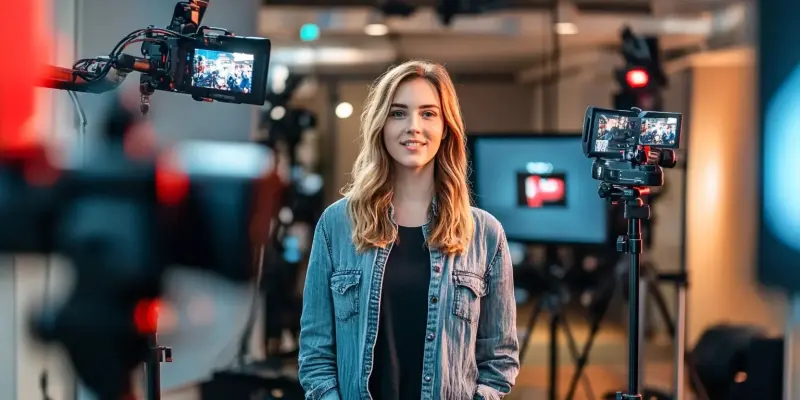In the rapidly evolving landscape of influencer marketing, there has been a significant shift from viewing creators as mere tools for brand visibility to forming collaborative and creative partnerships.Brands traditionally directed influencers to follow strict briefs, focusing solely on visibility and engagement. However, this transactional approach often resulted in misaligned outputs and missed opportunities for more meaningful interactions. The mature creator economy now encourages brands to engage creators in partnerships emphasizing mutual creativity and shared goals, steering away from rigid, one-sided campaigns.
Evolving Dynamics in Influencer Marketing
Traditionally, brands perceived creators as dynamic billboards designed to showcase products and drive consumer engagement. This view was inherently transactional, limiting the potential to harness the true creative essence of influencers.The changing dynamics of the creator economy now encourage brands to see creators as partners in collaborative efforts, which leads to more authentic and meaningful interactions. The Creator Perspectives report by influencer marketing platform Influencer and cultural insights firm Crowd DNA captures this shift, highlighting essential aspects of creator-brand partnerships.Brands previously directed creators to adhere to strict briefs and guidelines, aiming primarily for visibility and reach. The rigidity of this approach often resulted in misaligned outputs, multiple revisions, and numerous missed creative opportunities. Creators, when treated as mere tools, are unable to unleash their full potential in content creation and engagement. The Creator Perspectives report sheds light on this transformation, emphasizing that successful collaborations emerge from mutual respect and understanding between brands and creators, underpinning genuine interactions.
The Creator’s Perspective
The Creator Perspectives report uncovers several communicative and strategic gaps existing between brands and creators.Significant portions of creators believe they perform much better when clear communication of marketing Key Performance Indicators (KPIs) and a deeper understanding of success metrics for brands are provided upfront. These insights stress the necessity for more transparent and inclusive campaign planning processes. By incorporating creators into the strategic conversations, brands can align their goals and visions more accurately, fostering genuine and productive collaborations.
Crucially, the study indicates a common misconception about creators yearning for absolute creative freedom. Many, in fact, seek a structured creative framework rather than full creative control.They prefer clear brand guidelines that allow for innovative amplification while maintaining brand consistency. This finding challenges the prevailing notion that creative control should be entirely handed over to creators. Instead, a balanced approach where both parties discuss and agree on guidelines can lead to more effective and resonant content creation.
Collaborative Approach for Success
Successful partnerships have proven to hinge on viewing creators as creative partners instead of mere vendors. By treating creators as brand custodians, brands are more likely to turn their campaigns into cultural moments, which can significantly enhance their narratives. Real-world examples, including @itscrystalwright’s experience, underscore the importance of preserving a creator’s unique voice and style in collaborations. When creators are given space within well-defined guidelines, they can inject their unique perspectives, thus enriching the content and making it more engaging for the audience.Another central theme emerging from the report highlights the value of long-term partnerships. While many creators express a preference for sustained, long-term collaborations, the reality is that short-term, performance-driven agreements still dominate the space. Long-term partnerships enable deeper alignment with the brand’s values and foster genuine advocacy. For example, @paperboyo’s positive experience with a tech brand that facilitated an immersive product experience shows the effectiveness of fostering longer-term, relationship-driven approaches over one-off engagements.
The Hustle Behind the Glamor
Despite the glamorous perceptions surrounding influencer marketing, the report illuminates the often-overlooked realities of the creator economy. A small percentage of creators dedicate themselves to content production full-time. For most, content creation is an additional role on top of other jobs or side hustles. This multifaceted hustle necessitates more flexible partnerships and fair compensation from brands to ensure sustainable and productive collaborations. Most creators act as scriptwriters, editors, strategists, and customer service reps simultaneously, all while managing their diverse responsibilities.Brands must recognize and accommodate this hustle to foster stronger partnerships. Offering flexible timelines and adequate compensation for creators’ efforts can bridge the gap and build a foundation of trust and mutual respect. Understanding the pressures creators face and adjusting partnership dynamics accordingly can lead to more fruitful and engaging collaborations for both brands and influencers.
Bridging Culture and Content
In the swiftly evolving world of influencer marketing, a noticeable transformation has occurred. Brands are now shifting from seeing creators solely as tools for visibility to fostering collaborative and creative partnerships.Historically, brands provided influencers with rigid guidelines, focusing only on visibility and engagement metrics. This transactional mindset often led to mismatched outputs and overlooked chances for deeper connections. Today, the evolved creator economy promotes a more mature approach where brands engage creators through partnerships that highlight mutual creativity and shared objectives.This strategy moves away from inflexible, one-sided campaigns, embracing more balanced collaborations. Brands now recognize that leveraging the unique voices and creativity of influencers leads to more authentic and meaningful interactions.This shift marks a significant progression in the interplay between brands and creators, reflecting a deeper understanding of the value influencers bring to the table.

